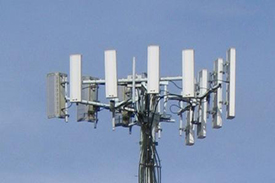During the 1990s, most EMF research focused on extremely low frequency exposures stemming from conventional power sources, such as power lines, electrical substations, or home appliances. While some of these studies showed a possible link between EMF field strength and an increased risk for childhood leukemia, their findings indicated that such an association was weak. Now, in the age of cellular telephones, wireless routers, and portable GPS devices (all known sources of EMF radiation), concerns regarding a possible connection between EMFs and adverse health effects still persists, though current research continues to point to the same weak association.
Additionally, the few studies that have been conducted on adults show no evidence of a link between EMF exposure and adult cancers, such as leukemia, brain cancer, and breast cancer. Nevertheless, NIEHS recommends continued education on practical ways of reducing exposures to EMFs.
Does my cell phone emit EMF radiation?
Measured in units called hertz, cell phone emissions, a form of radiofrequency radiation, exist at the lower end of the non-ionizing radiation spectrum at the 900-1900 megahertz range. At present, the weight of the current scientific evidence has not conclusively linked cell phone use with any adverse health problems, though scientists admit that more research is needed. To that end, the National Toxicology Program (NTP), headquartered at NIEHS, is leading the largest laboratory rodent study, to date, on cell phone radiofrequency exposure, the findings of which are expected sometime in 2015.
What if I live near a power line?
It is important to remember that the strength of a magnetic field decreases dramatically with increasing distance from the source. This means that the strength of the field reaching a house or structure will be significantly weaker than it was at its point of origin, a concept which is illustrated on page 37 of the NIEHS educational booklet, “EMF: Electric and Magnetic Fields Associated with the Use of Electric Power.”. For example, a magnetic field measuring 57.5 milligauss immediately beside a 230 kilovolt transmission line measures just 7.1 milligauss at a distance of 100 feet, and 1.8 milligauss at a distance of 200 feet.
How can I find out if I’m being exposed to EMFs?
If you are concerned about EMFs emitted by a power line or substation in your area, you can contact your local power company to schedule an on-site reading. You can also measure EMFs yourself with the use of a gaussmeter, which is available for purchase online through a number of retailers.
Where can I learn more?
 This site is dedicated to investigating how modern technology affects your health and to providing practical alternatives to reduce its impact. We like our technology, so we are not advising living in a wooden shack on a remote island (but feel free if that’s what you want to do!) and we have tried to maintain a scientific approach rather than alarmist scaremongering to try to sell you unproven devices or snake oil cure-alls. Currently our work has been focussing on minimising the affect of cell phones radiation and safe home wifi networks. Both of these areas have suffered from extensive health scares but with very little proven facts. Also, changing the way you use these technologies can substantially reduce your exposure to the radio signals they use and which are claimed to be detrimental to you health.
This site is dedicated to investigating how modern technology affects your health and to providing practical alternatives to reduce its impact. We like our technology, so we are not advising living in a wooden shack on a remote island (but feel free if that’s what you want to do!) and we have tried to maintain a scientific approach rather than alarmist scaremongering to try to sell you unproven devices or snake oil cure-alls. Currently our work has been focussing on minimising the affect of cell phones radiation and safe home wifi networks. Both of these areas have suffered from extensive health scares but with very little proven facts. Also, changing the way you use these technologies can substantially reduce your exposure to the radio signals they use and which are claimed to be detrimental to you health.



